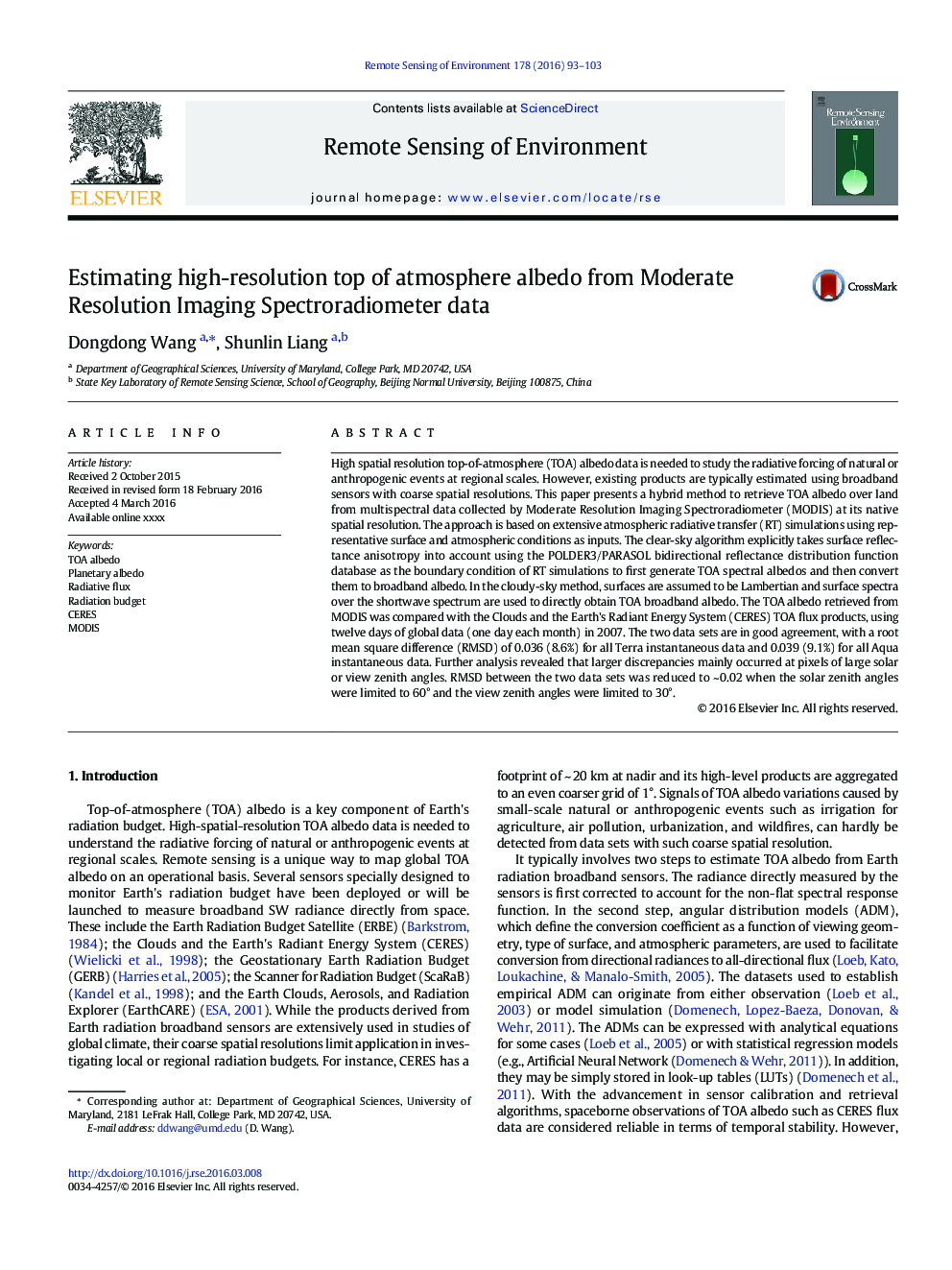| کد مقاله | کد نشریه | سال انتشار | مقاله انگلیسی | نسخه تمام متن |
|---|---|---|---|---|
| 6345387 | 1621222 | 2016 | 11 صفحه PDF | دانلود رایگان |
عنوان انگلیسی مقاله ISI
Estimating high-resolution top of atmosphere albedo from Moderate Resolution Imaging Spectroradiometer data
ترجمه فارسی عنوان
برآورد بالا با وضوح بالا از آلبدو جو از داده های طیف سنجی سنج تصویر با وضوح تصویر متوسط
دانلود مقاله + سفارش ترجمه
دانلود مقاله ISI انگلیسی
رایگان برای ایرانیان
کلمات کلیدی
موضوعات مرتبط
مهندسی و علوم پایه
علوم زمین و سیارات
کامپیوتر در علوم زمین
چکیده انگلیسی
High spatial resolution top-of-atmosphere (TOA) albedo data is needed to study the radiative forcing of natural or anthropogenic events at regional scales. However, existing products are typically estimated using broadband sensors with coarse spatial resolutions. This paper presents a hybrid method to retrieve TOA albedo over land from multispectral data collected by Moderate Resolution Imaging Spectroradiometer (MODIS) at its native spatial resolution. The approach is based on extensive atmospheric radiative transfer (RT) simulations using representative surface and atmospheric conditions as inputs. The clear-sky algorithm explicitly takes surface reflectance anisotropy into account using the POLDER3/PARASOL bidirectional reflectance distribution function database as the boundary condition of RT simulations to first generate TOA spectral albedos and then convert them to broadband albedo. In the cloudy-sky method, surfaces are assumed to be Lambertian and surface spectra over the shortwave spectrum are used to directly obtain TOA broadband albedo. The TOA albedo retrieved from MODIS was compared with the Clouds and the Earth's Radiant Energy System (CERES) TOA flux products, using twelve days of global data (one day each month) in 2007. The two data sets are in good agreement, with a root mean square difference (RMSD) of 0.036 (8.6%) for all Terra instantaneous data and 0.039 (9.1%) for all Aqua instantaneous data. Further analysis revealed that larger discrepancies mainly occurred at pixels of large solar or view zenith angles. RMSD between the two data sets was reduced to ~ 0.02 when the solar zenith angles were limited to 60° and the view zenith angles were limited to 30°.
ناشر
Database: Elsevier - ScienceDirect (ساینس دایرکت)
Journal: Remote Sensing of Environment - Volume 178, 1 June 2016, Pages 93-103
Journal: Remote Sensing of Environment - Volume 178, 1 June 2016, Pages 93-103
نویسندگان
Dongdong Wang, Shunlin Liang,
